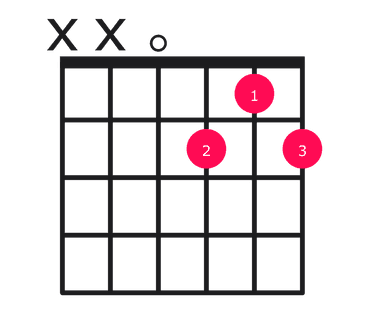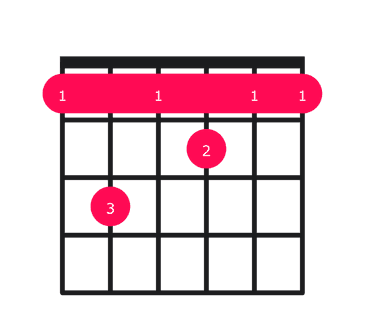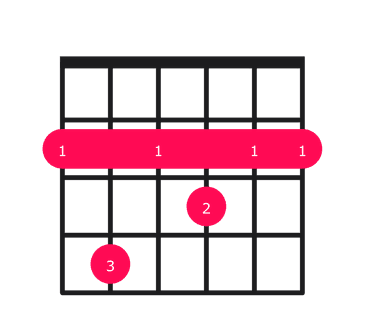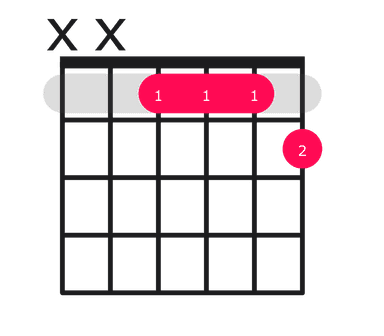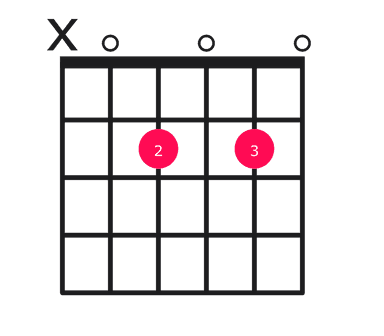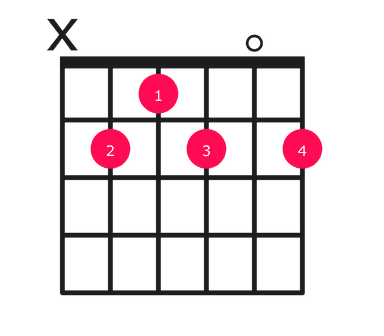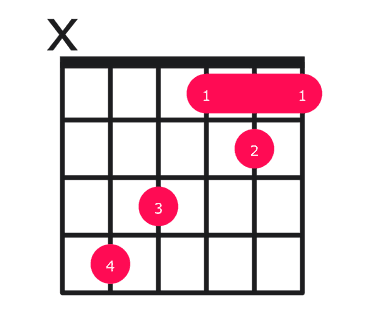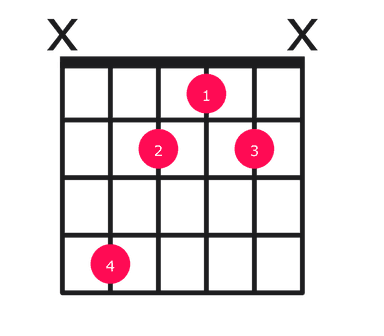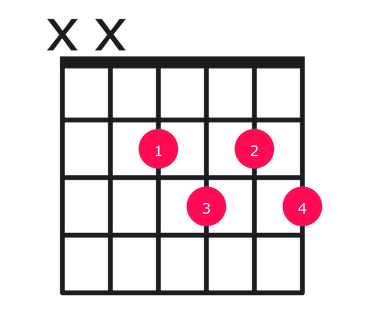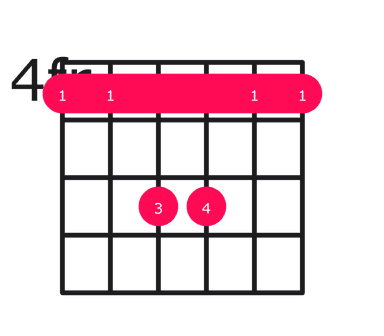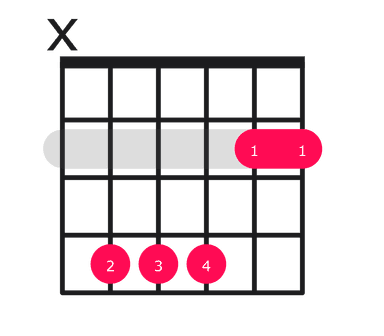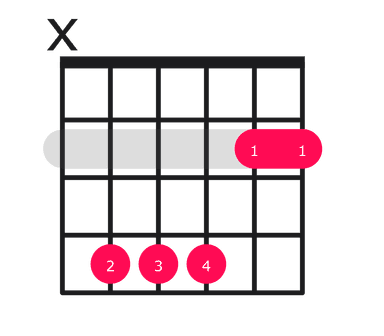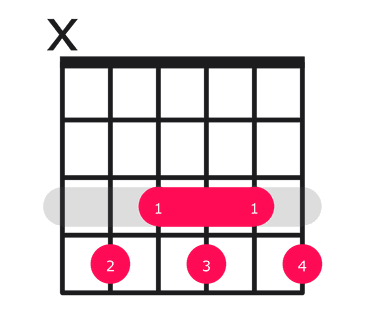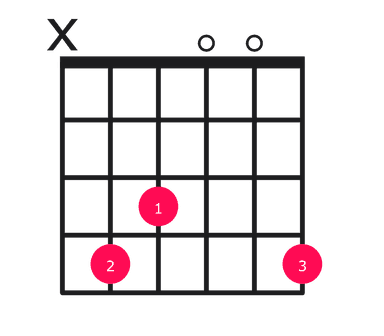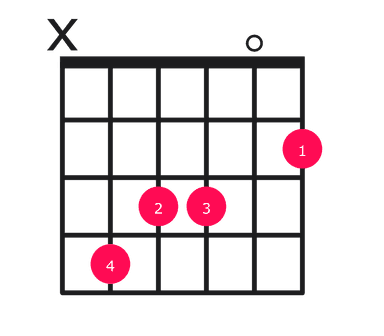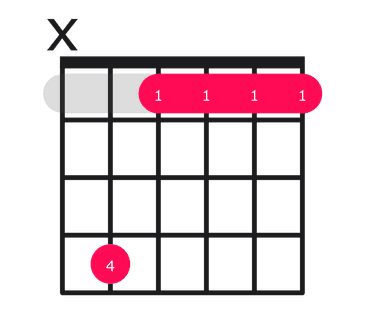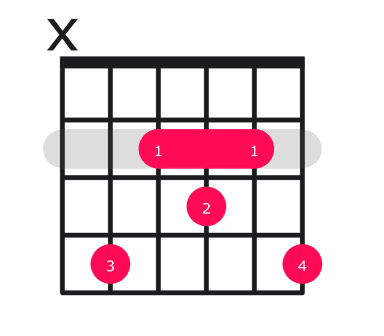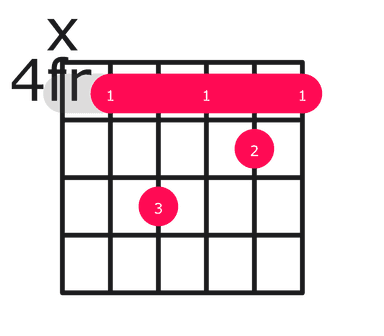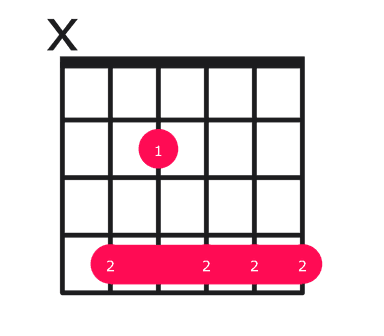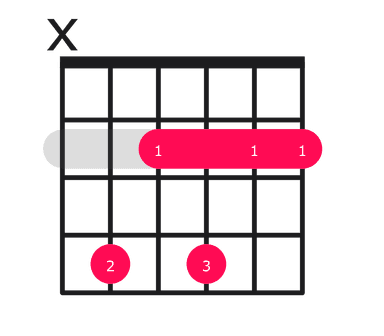How to play the C#7 chord on guitar
Unlock the secrets of C#7, the chord behind hits like "I Don't Want to Miss a Thing."
The C#7 chord
The C#7 chord, pronounced "C sharp dominant seventh," is a colorful and versatile chord that adds a bluesy, jazzy flavor to progressions. Notable for its distinct, slightly dissonant sound, the C#7 is often used in blues, jazz, and funk music to create tension and resolution. It can be heard in songs like "Superstition" by Stevie Wonder and "Red House" by Jimi Hendrix.
There are many ways to play a chord. Here's a diagram for the most common C#7 chord. We've also included other versions below.
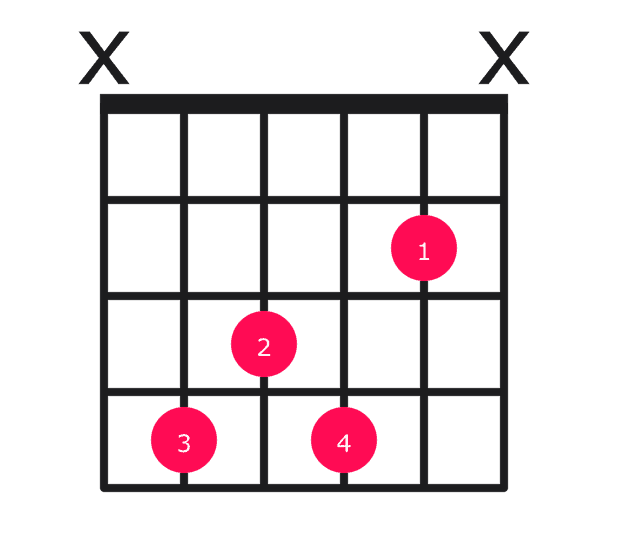
Unlock your playing potential in online guitar lessons with experts on Til. Start today and achieve your guitar goals quickly. Find a top-rated teacher.
Finger placement for C#7 chord
The most common way to play the C#7 chord on guitar is as a barre chord on the 9th fret.
Follow these finger positions to play a C#7 chord on your guitar:
- Place your index finger across all six strings on the 9th fret, forming a barre.
- Place your middle finger on the 10th fret of the 3rd (G) string.
- Place your ring finger on the 11th fret of the 5th (A) string.
- Place your pinky finger on the 11th fret of the 4th (D) string.
To strum this chord, use a downward motion to strike all six strings simultaneously with your pick or thumb.
How to play an easy C#7 chord on guitar
If you're a beginner looking to play a simpler version of the C#7 chord, try playing an open position dominant seventh chord shape and moving it up to the 4th fret. Place your index finger on the 4th fret of the 5th string, middle finger on the 6th fret of the 3rd string, and ring finger on the 6th fret of the 2nd string.
How to play a C#7 bar chord
The C#7 barre chord is a useful alternative to the standard open chord voicing, as it allows you to play the chord shape at any fret position on the neck. This makes it easier to switch between chords and play in different keys.
Here's how to play a C#7 barre chord:
- Place your index finger across the 9th fret, covering all six strings (barre).
- Place your ring finger on the 11th fret of the 4th (D) string.
- Place your pinky finger on the 11th fret of the 3rd (G) string.
- Place your middle finger on the 10th fret of the 2nd (B) string.
- Strum from the 5th (A) string down to the 1st (high E) string.
Common C#7 chord progressions
The C#7 chord, with its sharp and slightly dissonant sound, is often used in blues, jazz, and R&B progressions to add tension and emotion. Here are some common chord progressions featuring the C#7 chord:
- I7 - IV7 - I7 - V7 (C#7 - F#7 - C#7 - G#7)
- I7 - VI7 - II7 - V7 (C#7 - A#7 - D#7 - G#7)
- I7 - IV7 - V7 (C#7 - F#7 - G#7)
- I7 - VI7 - II7 - V7 - I7 (C#7 - A#7 - D#7 - G#7 - C#7) Used in "Sweet Georgia Brown"
- I7 - #IVo7 - I7 - VI7 - II7 - V7 (C#7 - Fo7 - C#7 - A#7 - D#7 - G#7)
Drills to master the C#7 chord
To master the C#7 chord, try strumming it repeatedly while switching between different rhythms. Start with a slow, steady pace and gradually increase your speed. Experiment with various strumming patterns to develop muscle memory and dexterity.
Another effective drill is to practice transitioning smoothly between C#7 and other common chords, such as A, D, and G#m. Focus on minimizing the time it takes to change chords, ensuring that each note rings out clearly. With consistent practice, you'll soon find yourself playing the C#7 chord with ease and confidence.
Unlock your playing potential in online guitar lessons with experts on Til. Start today and achieve your guitar goals quickly. Find a top-rated teacher.
Abbey F.
"Nena tailored the class to us and what we wanted to learn. She gave us tips and tricks on how to play songs we wanted at whatever level we are at, I always felt encouraged. This class has been an invaluable part of my guitar playing journey."
Songs that feature the C#7 chord
Here are 10 popular songs you can play with the C#7 chord:
- I Wish by Stevie Wonder (C#7, F#7, G#7, C#7)
- Shout by The Isley Brothers (C#7, F#7, G#7, C#7)
- Ain't Nobody by Chaka Khan (C#7, F#7, G#7, C#7)
- I Believe in a Thing Called Love by The Darkness (C#7, F#7, G#7, C#7)
- Boogie Wonderland by Earth, Wind & Fire (C#7, F#7, G#7, C#7)
- September by Earth, Wind & Fire (C#7, F#7, G#7, C#7)
- Le Freak by Chic (C#7, F#7, G#7, C#7)
- Jungle Boogie by Kool & The Gang (C#7, F#7, G#7, C#7)
- Brick House by The Commodores (C#7, F#7, G#7, C#7)
- Get Down On It by Kool & The Gang (C#7, F#7, G#7, C#7)
How a guitar teacher can help
If you feel stuck in your playing, it might help to take personalized guitar lessons with an expert guitarist. Taking lessons with a pro gives you access to the skills, feedback, and motivation to reach your goals.
You can find expert guitar teachers to support you in the journey. Thousands of people have turned to online guitar lessons on Til, instead of traditional in-person lessons, because Til gives you access to the best teachers in the world from the comfort of home. And with flexible scheduling, secure payments, lesson recordings, and a private chat with your teacher–there’s never been a better way to learn guitar.

